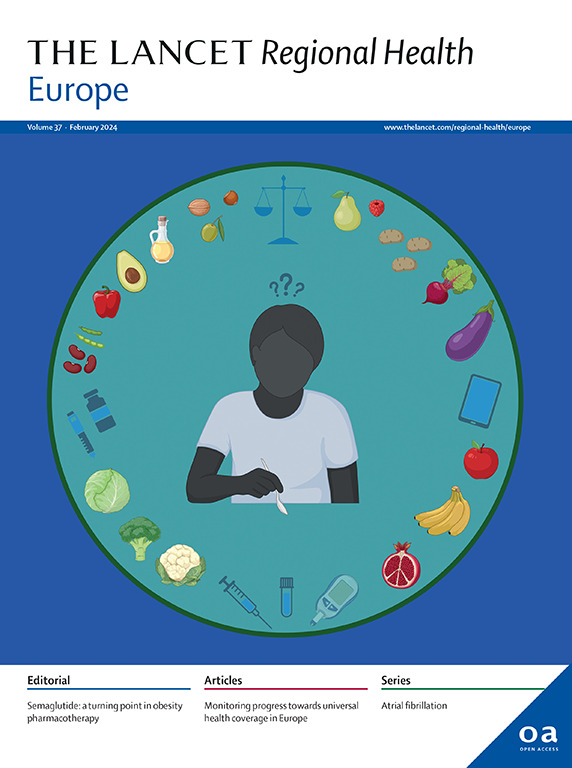Laparoscopic versus open parenchymal preserving liver resections in the posterosuperior segments (ORANGE Segments): a multicentre, single-blind, randomised controlled trial
IF 13.6
Q1 HEALTH CARE SCIENCES & SERVICES
引用次数: 0
Abstract
Background
An increasing number of liver resections are performed laparoscopically, while laparoscopic resection of lesions in the posterosuperior segments is technically challenging. We aimed to assess the outcomes of laparoscopic and open parenchymal preserving resection of lesions in the posterosuperior segments in a randomised controlled trial.
Methods
In this multicentre, patient-blinded, superiority randomised controlled trial, patients requiring parenchymal preserving liver resection for tumours in segment 4a, 7, or 8 were enrolled at 17 centres and randomised 1:1 to laparoscopic or open surgery using a minimisation scheme stratifying for centre and lesion size. The primary endpoint was time to functional recovery measured in postoperative days. To detect a difference in time to functional recovery of two days the sample size needed 250 patients, an interim analysis was planned with 125 patients. Patients and outcome assessors were blinded to the allocation. The study was registered on clinicaltrials.gov, NCT03270917.
Findings
Between November 2017 and November 2021, 251 patients were randomised to laparoscopic (n = 125) or open (n = 126) surgery. The majority of patients had a preoperative diagnosis of cancer (225/246 = 91.5%). Time to functional recovery was 3 days (IQR 3–5) in the laparoscopic group compared to 4 days (IQR 3–5) in the open group (difference −19.2%, 96% CI −28.8% to −8.4%; p < 0.001). Hospital stay was similarly shorter in the laparoscopic group (4 days, IQR 3–5 versus 5 days, IQR 4–7; p < 0.001). There were three deaths in the laparoscopic group (3/122 = 2.5%) and one in the open group (1/124 = 0.8%) within 90 days of resection (p = 0.336). Overall postoperative morbidity, severe morbidity, liver-specific morbidity, and readmission were not statistically significant different between the groups. The radical resection (R0) rate in patients with cancer was comparable (laparoscopic 93/106 = 87.7% versus open 97/113 = 85.8%, p = 0.539).
Interpretation
For patients with lesions in the posterosuperior segments of the liver, laparoscopic surgery, as compared to open surgery, reduces time to functional recovery. However, this reduction in time to functional recovery did not meet the hypothesized difference in time to functional recovery of two days.
Funding
This investigator-initiated trial was funded by Ethicon (Johnson & Johnson), Cancer Research United Kingdom, and Maastricht University Medical Centre+.
腹腔镜与开放保留肝后上节段(橙色节段)切除术:一项多中心、单盲、随机对照试验
背景:越来越多的肝脏切除术是在腹腔镜下进行的,而腹腔镜切除后上段的病变在技术上是具有挑战性的。我们的目的是在一项随机对照试验中评估腹腔镜和开放保留肺实质切除后上节段病变的结果。方法在这项多中心、患者盲法、优势随机对照试验中,17个中心的4a、7或8节段肿瘤患者需要保留肝切除,采用中心和病变大小分层最小化方案,按1:1随机分组至腹腔镜或开放手术。主要终点是术后测量的功能恢复时间。为了检测两天功能恢复的时间差异,样本量需要250例患者,计划对125例患者进行中期分析。患者和结果评估者对分配不知情。该研究已在clinicaltrials.gov注册,编号NCT03270917。在2017年11月至2021年11月期间,251名患者被随机分配到腹腔镜(n = 125)或开放式(n = 126)手术组。大多数患者术前诊断为癌症(225/246 = 91.5%)。腹腔镜组功能恢复时间为3天(IQR 3 - 5),而开放组为4天(IQR 3 - 5)(差异为- 19.2%,96% CI为- 28.8%至- 8.4%;p & lt;0.001)。腹腔镜组住院时间同样较短(4天,IQR 3-5比5天,IQR 4 - 7;p & lt;0.001)。腹腔镜组术后90天内死亡3例(3/122 = 2.5%),开放组1例(1/124 = 0.8%)(p = 0.336)。术后总发病率、严重发病率、肝脏特异性发病率、再入院率组间差异无统计学意义。肿瘤患者的根治性切除(R0)率具有可比性(腹腔镜93/106 = 87.7%,开放97/113 = 85.8%,p = 0.539)。对于肝后上段病变的患者,腹腔镜手术与开放手术相比,减少了功能恢复的时间。然而,这种功能恢复时间的减少并不符合两天功能恢复时间的假设差异。这项由研究者发起的试验由Ethicon (Johnson &;约翰逊)、英国癌症研究中心和马斯特里赫特大学医学中心+。
本文章由计算机程序翻译,如有差异,请以英文原文为准。
求助全文
约1分钟内获得全文
求助全文
来源期刊

Lancet Regional Health-Europe
Multiple-
CiteScore
19.90
自引率
1.40%
发文量
260
审稿时长
9 weeks
期刊介绍:
The Lancet Regional Health – Europe, a gold open access journal, is part of The Lancet's global effort to promote healthcare quality and accessibility worldwide. It focuses on advancing clinical practice and health policy in the European region to enhance health outcomes. The journal publishes high-quality original research advocating changes in clinical practice and health policy. It also includes reviews, commentaries, and opinion pieces on regional health topics, such as infection and disease prevention, healthy aging, and reducing health disparities.
 求助内容:
求助内容: 应助结果提醒方式:
应助结果提醒方式:


